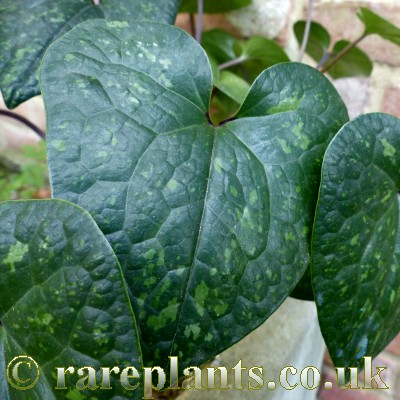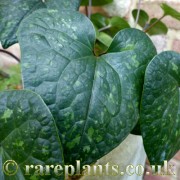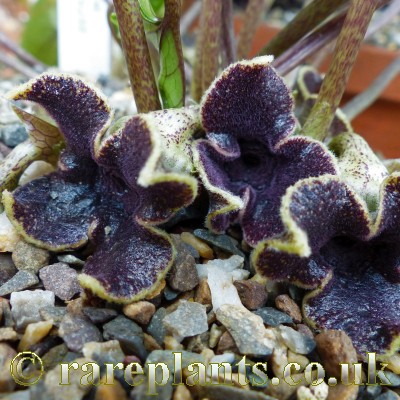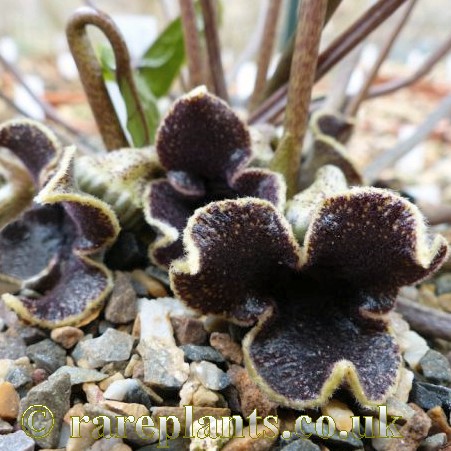Description
(Heterotropa crassa)
A very rare Japanese species which is known only from the Ujimukae Islands, Kagoshima prefecture, situated off the coast of the most southerly of the main Japanese Islands, Kyushu.
The leaves are broadly ovate and are each about 12-18cm long by less in width. They are noticeably thick, succulent and waxy. The botanical term is coriaceous, meaning “with the texture of leather”. They are deep green and glossy. This is usually considered to have plain leaves but some esteemed cultivars have leaves which are flecked and speckled, here and there with paler green. The leaves of this species are the largest in a small group of related species, the hexalobum group.
The flowers are hairy on the outside and they stand out for their very unusual shape. The petiole which holds the flower is very abruptly and sharply bent, so that it angles the flower down. This means that, in nature at least, one petal rests (just) on the soil surface and thus pollinating insects (ants?) can walk directly into the flower rather than having to climb up the stems from the soil. The tube of the flower is purple-violet and is very inflated and decorative; it forms an ovoid chamber which sits behind the petals. These are wide-spreading and are deep shiny chestnut brown, The petal surface is slightly carunculated and is strikingly edged with white or cream.
It is an interesting species as it is endemic to a just small island group and it is not found on the mainland. However the spread and distribution of Asarum is considered almost impossible without a direct land connection for the small, heavy seed (which is made at ground level) to be spread.
Asarum crassum has been cultivated in Japan for centuries but it is very slow to increase. In keeping with its southerly wild home, this is one that likes warm cultivation, to give its best. A pot of fertile, loam-based leafy compost is best and keeping it under glass, even alpine glass gives the best results. One of our very rarest Asarum.




